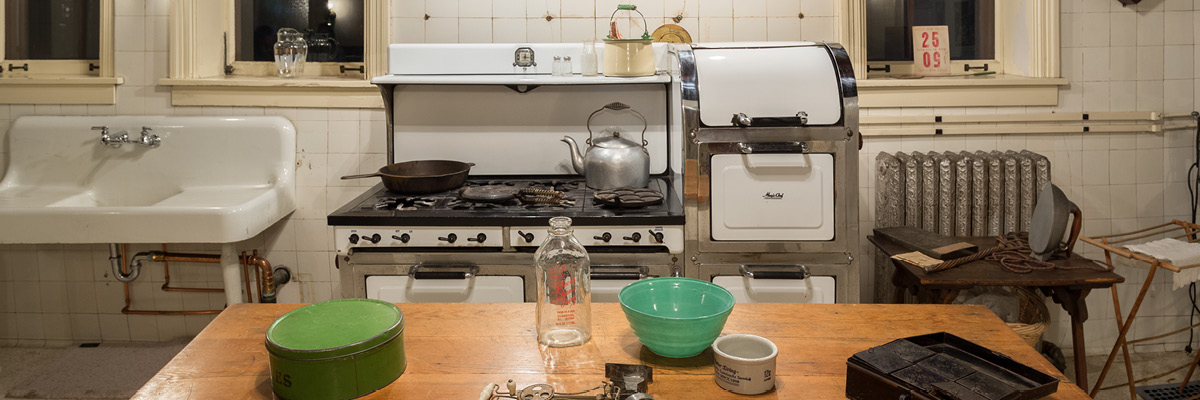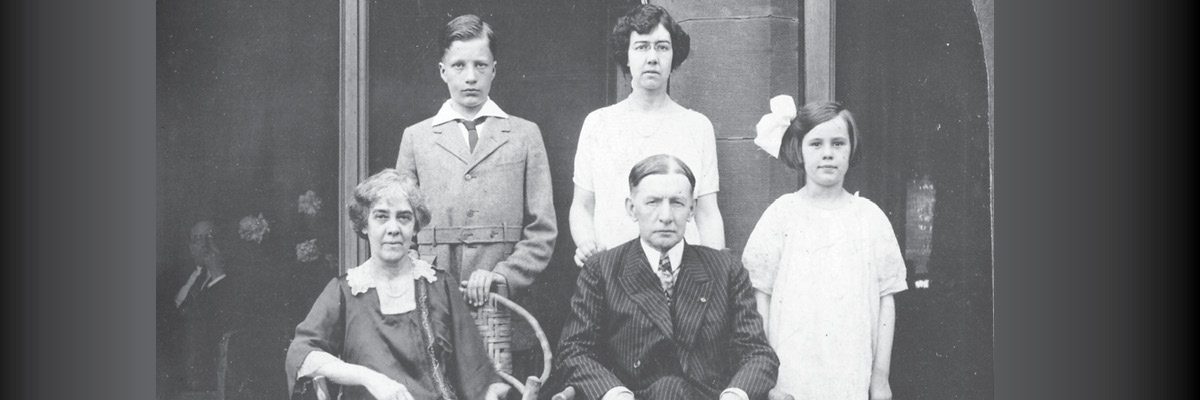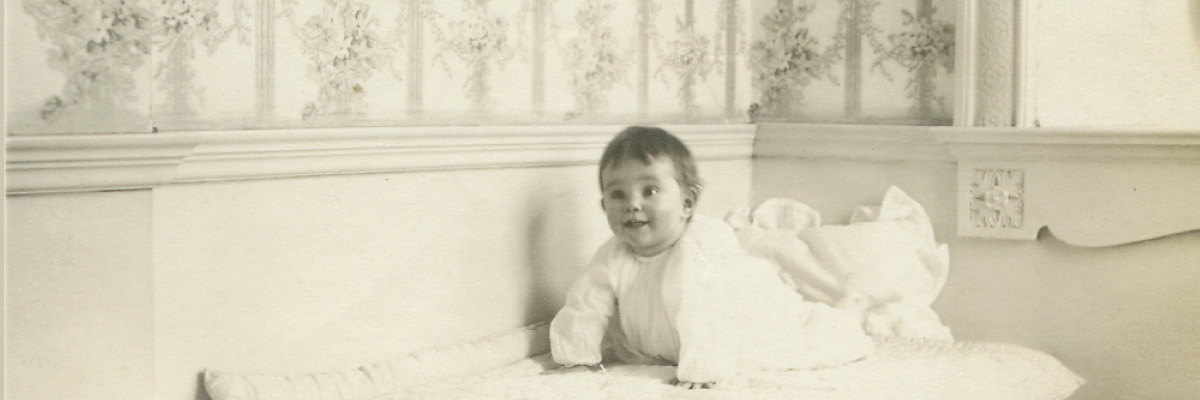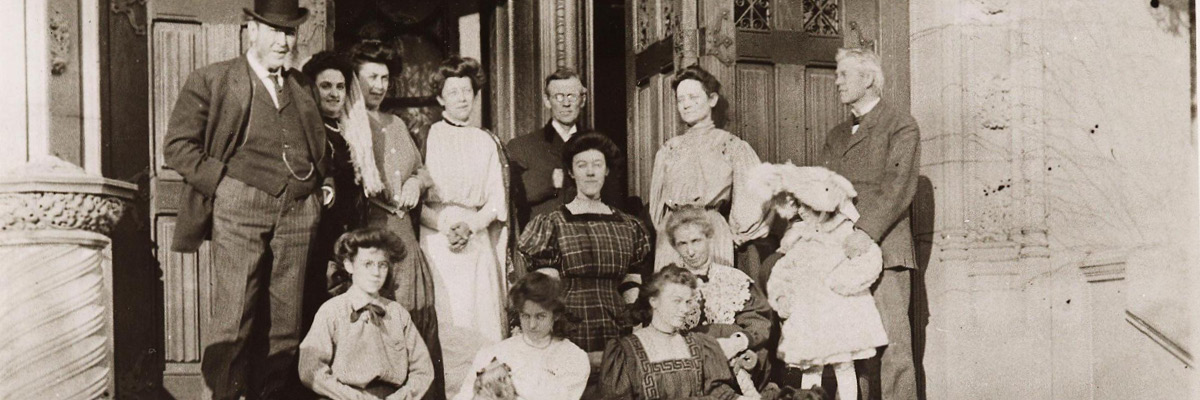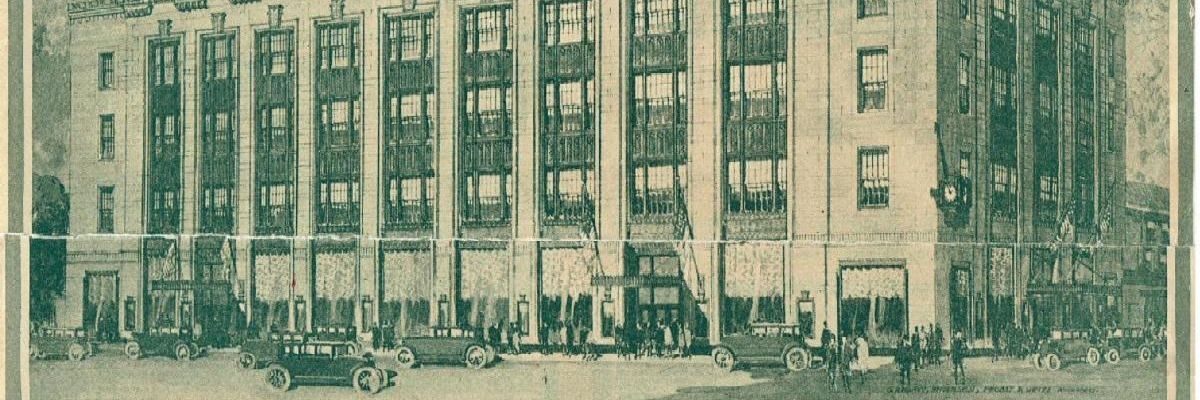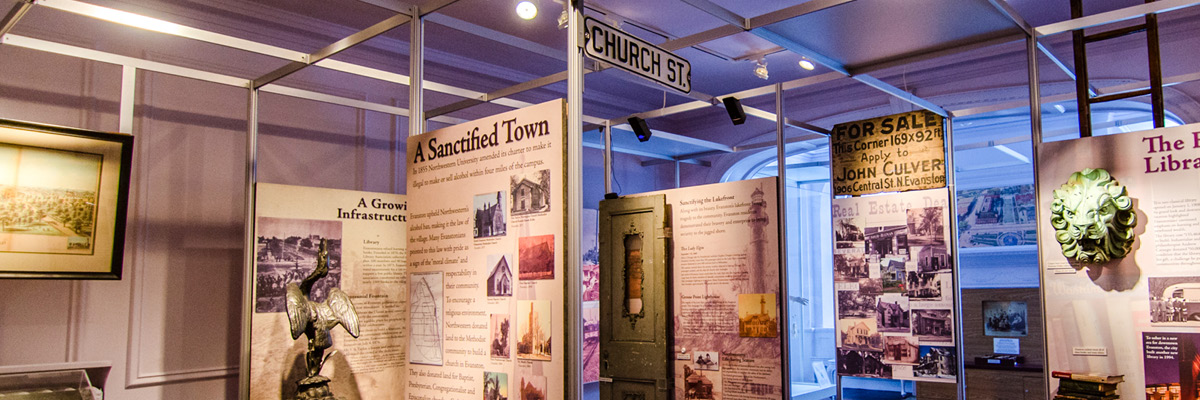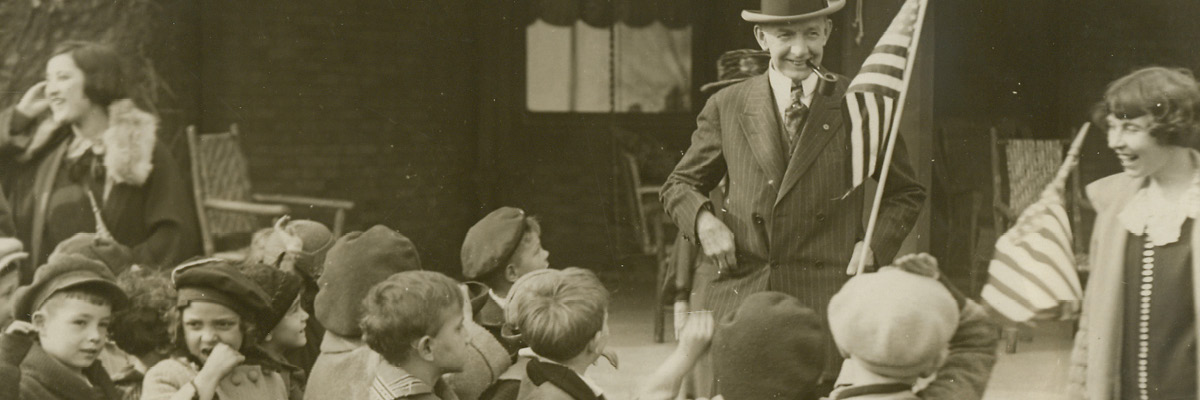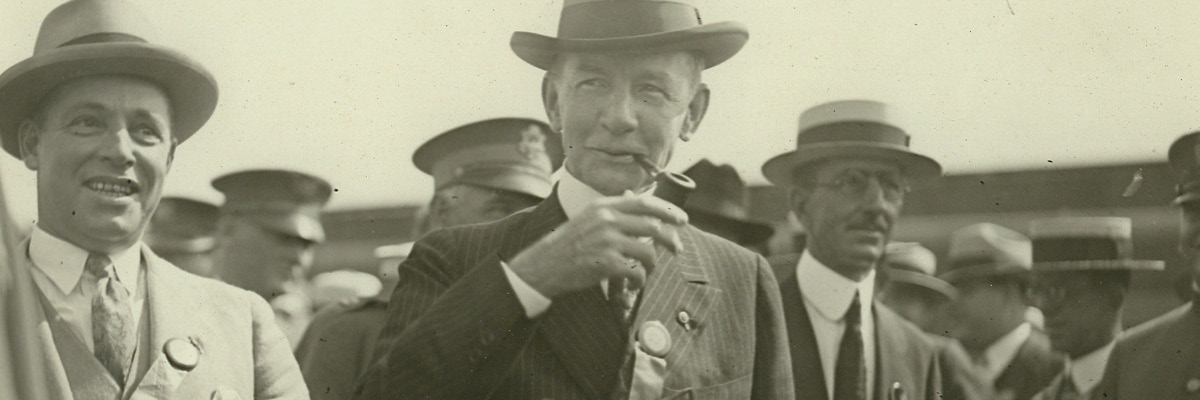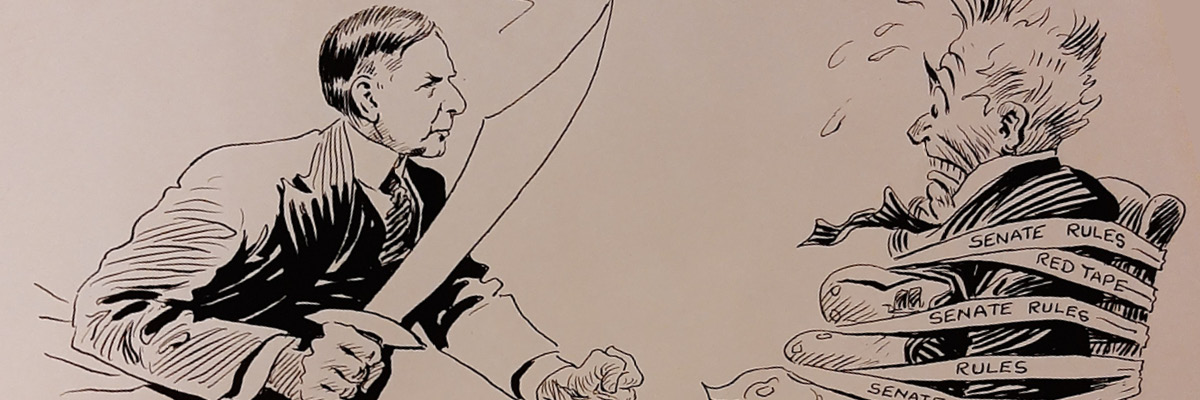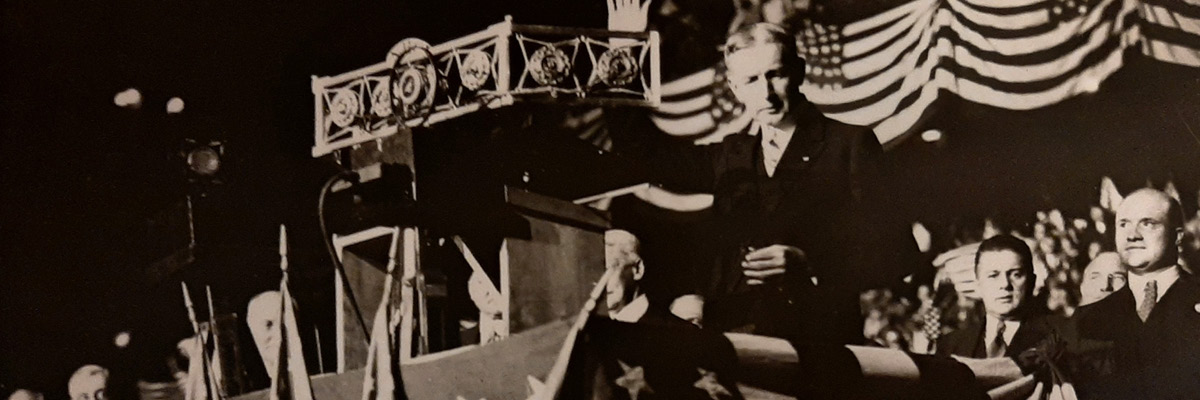Step back in time
In 1894, Dr. Robert Dickinson and Virginia Loring Sheppard hired New York architect Henry Edwards Ficken to design this distinctive family home on Greenwood Street and the Lake Michigan shore.
Charles Gates Dawes and Caro Blymyer Dawes purchased the property in 1909, living here with their children and longtime domestic staff, for over 40 years. Each room showcases the family’s remarkable collection of furnishings and artwork, interpreted through their lifestyle in the 1920s. Tour through the magnificent Great Hall, gracious reception parlors, expansive library, galleried dining room, and historic kitchen. In this house, the Dawes family welcomed a wide range of acquaintances, from neighborhood children to global dignitaries.
In keeping with a lifelong commitment to community service, Charles and Caro provided that the house would remain as a center for Evanston history and open to the community. The home of the Evanston History Center since 1960, and named a National Historic Landmark in 1966, continues to welcome visitors from Evanston and around the world today.
“An architectural tour de force, filled with surprising details and craftsmanship, all beautifully conserved.”
Immerse yourself in the Dawes’ notable collection of art and furnishings, exceptional Persian rugs, and stunning Tiffany lamps.
William Dawes rode with Paul Revere in 1776, one of many Dawes ancestors who played crucial roles in United States history.
Exhibits Included in the Dawes House Tour
The Curated Store: How Marshall Field’s Changed the Way Evanston Shopped
Open April 6, 2024 – June 7, 2024.
This charming exhibition will explore the influence of Marshall Field’s on the shopping culture of Evanston and beyond.
Throughout Chicagoland, Marshall Field’s revolutionized the retail experience, meticulously designing every aspect of the shopper’s journey, from the architecture of their buildings to the design of the signature box of Frangos chocolates. By prioritizing total customer service and offering a vast array of products and services, Marshall Field’s transformed Evanston into one of the North Shore’s premier retail destinations. “The Curated Store” will showcase rarely exhibited ephemera and objects from Marshall Field’s, providing visitors with a glimpse into the history and legacy of this iconic retailer.
Milestones and Memories
Evanston history from its beginnings to today. This wonderful interactive exhibit uses artifacts and archival materials from EHCs collection to tell the story of the community and some of the amazing people who called Evanston home.
A Crowded Life: Charles Gates Dawes
A concise and comprehensive look at the prolific accomplishments of Charles Dawes, including his Nobel Peace Prize certificate, countless photographs, memorabilia, and film clips from his public and private appearances.
Charles Gates Dawes
Born in Ohio at the end of the Civil War, with ancestors who had arrived a century before the Revolution, Dawes came from a family deeply engaged in American history. One great-great grandfather rode with Paul Revere, another established the Northwest Territory, while his father famously served in Wisconsin’s Iron Brigade during the Civil War.
Charles Dawes played a strategic role in many historic events of the 20th century. As a lawyer he defeated railroad monopolies, as an entrepreneur he invested in a network of gas utility companies, and as a financial expert he founded a major Chicago bank. Dawes served in four presidential administrations as a financial and logistical expert. His reorganization of Allied supply in World War 1 was credited with shortening the war, while his leadership in revising postwar reparations earned him the Nobel Peace Prize. He was elected Vice President under Calvin Coolidge and later appointed ambassador to England by President Hoover.
Dawes was a dedicated family man who worked closely with his brothers and often returned to Ohio to visit his family. He married Caro Blymyer and initially had two children, Rufus and Carolyn. When Rufus tragically died, the couple adopted two children, Dana and Virginia. They subsequently helped to establish a pioneering adoption agency, whose success was aided by Caro’s dedication.
Dawes was a committed philanthropist, sharing his resources with the broader community. He established a network of food and housing assistance to the homeless and marginalized. He was also a talented musician and a published composer, with a number one hit song. He left a legacy of generosity, empathy, and understanding that set him apart from his contemporaries.
Charles Dawes was co-recipient of the 1925 Nobel Peace Prize for his work as chair of the committee that created a plan to stabilize the German economy after World War I and organize a method of debt repayment to the Allied nations.
Charles Dawes was twice featured on the cover of Time magazine, in 1925 and 1928. This 1928 cover references an article exploring the upcoming Presidential election, calling him a “dark horse.”
The “dinner pail” was the typical lunch box carried to work by laborers. After the economy rebounded during Coolidge-Dawes first term, their second campaign called attention to this, particularly appealing to the labor vote.
Melody in A Major
Dawes played the piano and the flute and spent many enjoyable hours playing and improvising. One day in 1911, he would later recount, this tune came to him and he composed it at one sitting at the piano. His good friend and fellow Marietta native, virtuoso violinist Frances MacMillan expressed enthusiasm for the piece, prompting Dawes to give it to him, saying, “I never gave the thing a name. If you want it, you can have it. It has served its purpose as a diversion for me.”
Months later, Dawes was walking down Chicago’s State Street and was surprised to see a poster-size photo of himself in a music store window, surrounded by sheet music for his song, now entitled “Melody.” By World War I, it was a popular tune, played by A. E. F. military bands when Dawes was serving in France. Violinist Fritz Kreisler’s 1924 recording achieved the broadest reach.
In 1931, lyricist Don Wilson added lyrics to the music, entitling it “Let Me Dream.” This version had moderate success during the Depression and beyond, picked up by many performers including Jimmy Dorsey and his band in 1940.
In 1951, prolific Brill Building lyricist Carl Sigman rewrote the lyrics, and the song became “It’s All in the Game.” One account states that Sigman turned the lyrics over to copyright owner Warner Brothers Music on the same day of Dawes’ death, April 23, 1951; Dawes would never hear this version.
That year, several notable artists recorded “It’s All in the Game”, including Louis Armstrong, Dinah Shore, and Tommy Edwards, whose version went to #18. Several years later, in 1958, Edwards re-recorded the song with a Doo-Wop arrangement on one of the first stereo singles ever released. This version went to #1 on Billboard’s Top 100, making Tommy Edwards the first African American to make Billboard’s #1 slot and thereby making Charles Dawes the first and only Vice President with a #1 hit.
World War I
During World War I, Dawes went overseas where he served as General Purchasing Agent, coordinating the acquisition of all supplies—coal, horses, et al—for the American Expeditionary Forces. He would rise to the rank of Brigadier General. His good friend, General John J. Pershing, served as commander of the American forces.
Financing Europe and the Nobel Peace Prize
In 1925, Dawes was the co-recipient of the Nobel Peace Prize, along with Sir Austen Chamberlain. Dawes was recognized for his work as chairman of the Allied Reparation Commission that worked to handle the issue of German reparations following World War I.
Vice presidency
In 1898, Charles Dawes was appointed comptroller of the currency. The Dawes’ moved to Washington, D.C., where they would live until 1901. In 1902, the family returned to Evanston, where Dawes ran unsuccessfully for senator.
In 1921, Dawes was appointed the first director of the newly created Bureau of the Budget. In 1924, Dawes accepted the nomination to run as U.S. Vice President with Calvin Coolidge. They won the election and the Dawes’ again moved to Washington, D.C.
Court of St. James’s
From 1929 to 1932, Charles and Caro Dawes lived in London during his tenure as the U.S. Ambassador to the United Kingdom. They returned to Evanston where they would live at 225 Greenwood once again.


